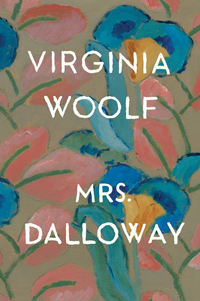 I have been re-reading Virginia Woolf’s Mrs Dalloway recently, enjoying the subtle but lively way in which the stream of consciousness narrative explores the inner lives of characters as they mull on the memories of their pasts, and the state they have reached at their present age, as they wander through London. Apart from one shocking moment in the centre of the novel, there is really no action. With precise references to streets and crossings, and noting the striking of Big Ben through the text, the reader can map and time the characters’ limited physical progress – all the real action is in the mind, and there time stretches over about thirty years of memories.
I have been re-reading Virginia Woolf’s Mrs Dalloway recently, enjoying the subtle but lively way in which the stream of consciousness narrative explores the inner lives of characters as they mull on the memories of their pasts, and the state they have reached at their present age, as they wander through London. Apart from one shocking moment in the centre of the novel, there is really no action. With precise references to streets and crossings, and noting the striking of Big Ben through the text, the reader can map and time the characters’ limited physical progress – all the real action is in the mind, and there time stretches over about thirty years of memories.
M.H. Abrams, in A Glossary of Literary Terms, defines stream of consciousness as:
the unbroken flow of thought and awareness in the waking mind… The stream of consciousness … is a mode of narration that undertakes to capture the spectrum and conscious and half-conscious thoughts, memories, expectations, feelings, and random associations.
That movement of thought also shifts from character to character as Woolf uses momentarily shared experiences to make connections – the sound of a back-firing exhaust pipe, a mysterious car passing down the street, an aeroplane in the sky. In this way, readers form their impressions from a number of different angles, offering alternative nuances or even contradictions. Character defies fixity and becomes as unstable as thought.
Mrs Dalloway’s Influence
The American writer Michael Cunningham is perhaps best known for his novel The Hours, and the film that was made of the novel. Using similar techniques, the novel is an overt homage to Woolf and Mrs Dalloway, following three women in three different decades – one of those women being Woolf herself, writing Mrs Dalloway. She is paralleled about 25 years later by an American woman who is reading Mrs Dalloway while preparing a birthday party for her husband. A further parallel takes us on another 50 years to the third character, Clarissa Vaughan, sharing a first name with Mrs Dalloway, who is also preparing party to celebrate the achievements of a friend, a poet who is dying of AIDS.
Not only does Cunningham make clear references to Woolf and her work throughout, he uses a stream of consciousness narration, and the action of the narration of each woman is also contained within a single day of their lives.
 Cunningham’s Days
Cunningham’s Days
The idea of the single day clearly appeals to Cunningham, as it is picked up again in his latest novel, titled, appropriately, Day. This time the point of focus is not Virginia Woolf, but the Covid pandemic and the day in question is 5 April. By looking at that single day in three successive years, before the pandemic, during the lockdown and afterwards when people can move freely again, he minutely explores the lives of a few characters in an apartment in New York. The debt to Woolf is still clearly there. As this review says, Cunningham again strives ‘to articulate the vast inner lives of a few unexceptional people on a single day.’
The Morality of Stories
Both Woolf and Cunningham remind us that human nature is complex, full of ambiguities rather than easily defined. Exploring that complexity is why we read literature and the thought it provokes alerts us to human relationships, the relationships between human beings and their environment, the role of human beings in society. We are not very often given easy answers, but particularly with the drifting uncertainties of stream of consciousness, we are made alert; we are made to think. That is a kind of moral impulse.
In this piece by Philip Pullman, he argues that stories are the most effective communicators of morality.
Could you tell me please what is the difference between stream of consciousness and indirect narrative discourse? Thank you.
That’s a good question. The lines between various kinds of narrative are not completely fixed, but indirect narrative discourse would usually use phrases such as ‘she thought’ to denote which character’s thoughts we are reading. The next stage would be free indirect discourse, where the third person narration is able to move in and out of different characters’ thoughts so that the reader sees things from their perspective. You can see this in writers from Jane Austen to Katherine Mansfield. The key difference between that and stream of consciousness is the degree to which the third person narration is present. In Austen and Mansfield, the anonymous third person narrator is still in control of the story, even though they transfer that authority to different characters’ thoughts at times, whereas a text like Mrs Dalloway has very little third person narration. The main bulk of the narration is within the minds (consciousness) of the characters.